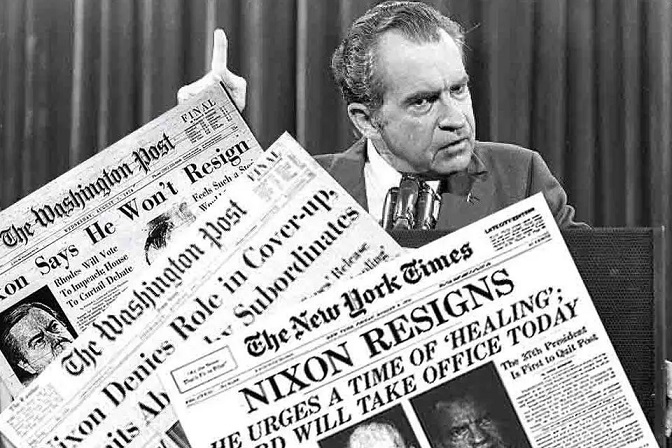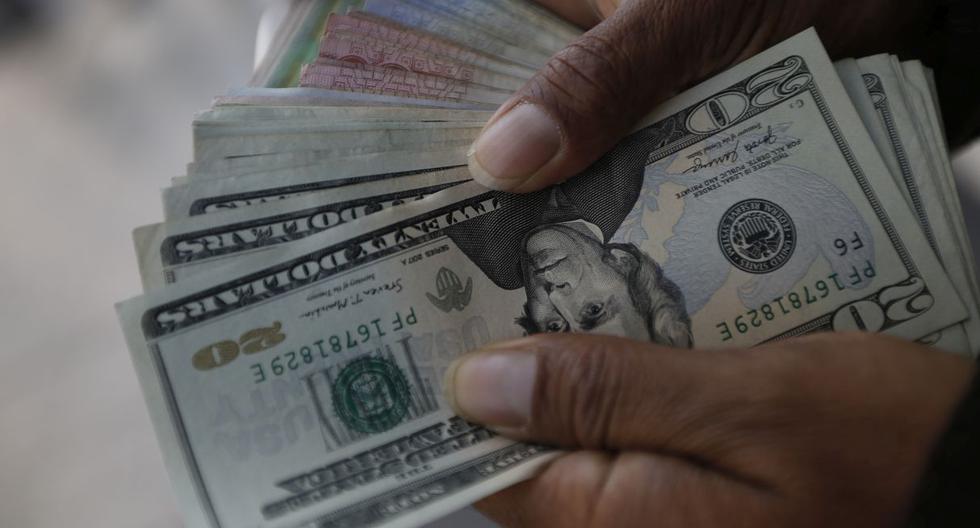By Christian Nielsen
The triggering event happened 50 years ago today. On June 17, 1972, at the sprawling Watergate hotel complex on the banks of Washington’s historic Potomac River, a security guard found doors suspiciously ajar in hallways leading to the Democratic National Committee. Shortly after, five subjects were arrested wearing the typical plumbers’ overalls and carrying tool boxes. The team had been working in Democratic offices to wiretap phones and give Republican strategists insider information on candidate George McGovern’s movements. In December of that same year, Richard Nixon ran for reelection, dealing a devastating beating to his opponent, capturing 61% of the electoral votes.
Nixon took over his second term but could barely hold out for a year and a half. The Watergate scandal blew up in his face and on August 8, 1974 he resigned from the Presidency of the United States. Before his vice president, Spiro T. Agnew, had done it, dragged by a corruption scandal. This determined that Gerald Ford, appointed by Nixon to replace the resigning, became the first US president not elected in general elections.
SPY PLUMBER
In the FBI interrogation rooms, the plumber spies sang it all. Virgilio Gonzáles, Frank Sturgis, lawyer Henry Rothblatt, Bernard Barker and Eugenio Martínez were exiles with strong ties to the Cuban counterrevolution, some of them participating in covert operations for the CIA, including the disastrous landing of
anti-Castro fighters at the Bay of Pigs in April 1961. A sixth element, a certain McCord, was an electronic intercept technician for the CIA. In the days of Watergate, he had been in charge of security for the Nixon campaign team.
Little by little, an espionage network emerged that Nixon and his team insisted on denying from the beginning, alleging political persecution in the midst of his run for re-election. But the increasingly detailed and in-depth publications of the press, especially the Washington Post and the New York Times, revealed everything from mismanagement of campaign funds to the destruction of official documents, especially tapes with internal audio records of the White House. After refusing to hand them over, the reels went to the prosecution table and showed an 18-minute gap erased by operators from the presidential headquarters. It was the loudest silence in the history of the White House.
Nixon’s collapse deepened from there.
PAPERS SING
The Watergate scandal established the figures of Bob Woodward and Carl Bernstein, investigative journalists for The Washington Post. With the intricacies revealed and Nixon removed from the presidency, the two decided to publish their experience in the book All de President’s men, which went on sale in 1974. Two years later, director Alan Pakula (To Kill a Mockingbird, The Pelican Brief) decided to take the screen what seemed to be a heavy and overwhelming story in details but that the writer William Goldman would be in charge of turning into a fast-paced thriller. One of the protagonists, Robert Redford, had already responded to Goldman’s masterful scripts in Butch Cassidy and the Sundance Kid, so he did not hesitate to suggest his inclusion in the cast, sharing the screen with another
big in agraz, Dustin Hoffman.
But the ground had already shaken Nixon before. It was in June 1971 that the New York Times published the first batch of documents contained in a certain intelligence report commissioned by Secretary of Defense Robert McNamara. There were 47 bibliographies with a detailed account of the way in which the United States had become militarily involved in Viet Nam between 1945 – shortly after Japan surrendered and the end of WWII – and 1967.
The dossier revealed that instead of reducing its participation in military actions in Southeast Asia, Washington had increased it, including bombing in Laos, coastal attacks against North Vietnam and marine incursions into southern territory. The publication of these documents infuriated Nixon who put into action all his pressure weapons, including an opinion of the Attorney General, trying to silence the press. But when the Washington Post took over and published more documents, public opinion made its outrage known, and the case reached the Supreme Court of Justice, which ruled in favor of both newspapers, in a historic sentence that consolidated the rule of law of the citizen. to learn about matters of direct interest to you.
ANOTHER BOOK, ANOTHER MOVIE
Although they did not achieve book status, the Pentagon Papers opened a veritable Pandora’s box that, overnight, shattered the seemingly peaceful and successful presence of US “military advisers” in the growing military crisis. of Indochina and paved the way for the Watergate crisis.
This time, the film was long in coming. In 2017, Steven Spielberg put on the table a budget of US $ 50 million to have the leading roles of Tom Hanks playing the legendary Ben Bradlee, general editor of the Washington Post, and Meryl Streep, the director Kay Graham, heiress of a newspaper of modest condition that his courage was in charge of transforming into a world beacon of press freedom.
Half a century separates from those events that shocked the world and that generated two cinematographic works as captivating and unforgettable as the events themselves.






